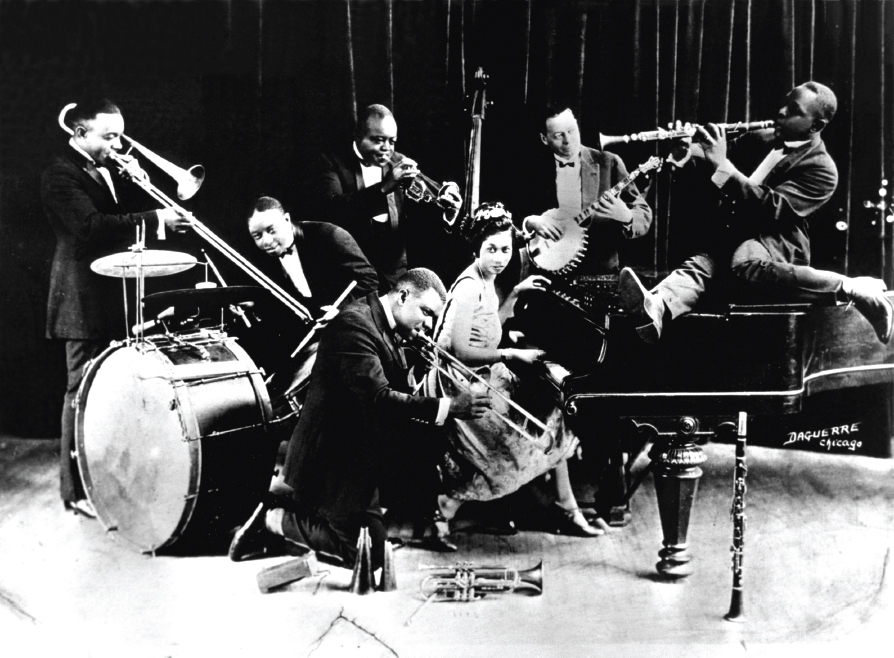New Orleans Jazz
Early jazz was local entertainment for black audiences, an informal, low-
Early jazz players developed the art of collective improvisation, or “jamming.” They learned to improvise simultaneously, each developing the special resources of his instrument — bright melodic spurts for the trumpet, fast running passages from low register to high for the clarinet, forceful slides for the trombone. They also acquired a sort of sixth sense for fitting in with the other improvisers. The non-
The first important center of jazz was New Orleans, home of the greatest early jazzman, Louis Armstrong, who played cornet and trumpet. Armstrong and his colleagues developed wonderfully imaginative and individual performance styles; aficionados can recognize any player after hearing just a few measures of a jazz record. With players of this quality, it is not surprising that solo sections soon became a regular feature in early jazz, along with collective improvisation.
Recording technology was already crucial in the spread of jazz. As popular records in those days were all just three minutes long, the jazz that has survived from that era is all slimmed down into three-
